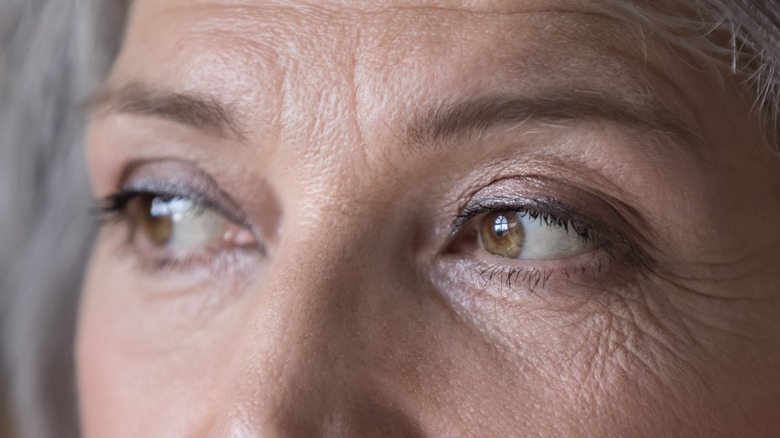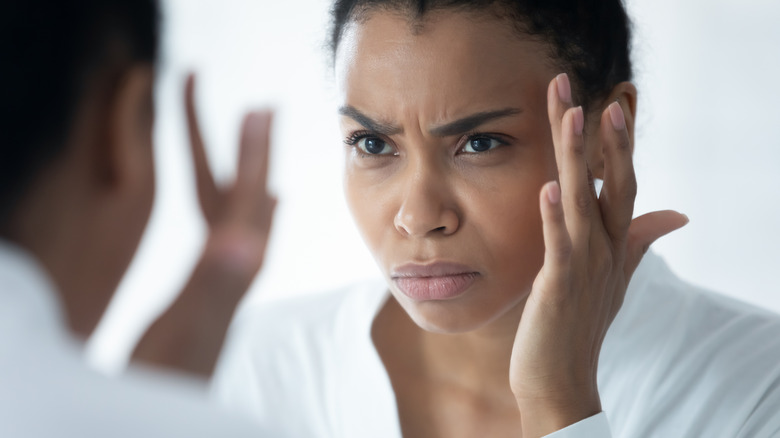The Reason Wrinkles Disappear When We Die
As much as we may be loath to admit it, none of us are getting any younger. Our brains don't tend to like acknowledging this, but our bodies seem to insist on reminding us at any opportunity they get. Are you experiencing an exciting new series of aches and pains where you didn't before? Are your birthday gifts taking on much more of a practical theme, rather than the silly fun toys you used to love? Perhaps your once famously-dark mop of hair is steadily becoming both less mop-like and rather less dark. These things tend to be rather conspicuous signs of aging.
Patient reports that people's memories and energy levels can be affected as they age. According to the outlet, osteoarthritis is so common among older people that it affects around 50% of those who are 65 or older, to varying degrees. The NHS states that this common medical condition, which affects the joints, is a result of the breakdown of bone cartilage, and that symptoms become more likely as a person gets older. That means more potential morning aches and pains to look forward to.
As well as distinguished-looking gray hair (or a lack thereof), wrinkles also become increasingly common and more numerous as we age. The good news, for those who are sensitive about such things, is that wrinkles won't be an issue when we die. Here's why they seem to disappear at the end of our lives.
The supposed woes of wrinkles
Where do those pesky wrinkles come from? Some may think that they're just an inevitable result of aging, but per Mayo Clinic, it's not as simple as that. The skin does become looser and lose its elasticity as we age, the outlet reports, but factors like sun damage and smoking throughout our lives can increase the impact of these natural effects. To some degree or another, though, we can take the very best care possible of our bodies as we age, but the process will catch up with us. Wrinkles may not come to us all to the same extent, but they will come to us all as we become older.
Areas that are particularly prone to wrinkling, such as the skin directly beneath the eyes, can be the subject of surgical procedures. Per Healthline, such surgery essentially smoothes out the skin artificially via careful extraction and stitching together. It's a procedure that can, Healthline goes on, potentially harm a person's vision and have other unfortunate side effects. Wrinkles are not the only reason to undergo such surgery, but for those who are profoundly affected by them on a cosmetic level, they can mitigate that. Here's one less worry, though: It seems that some wrinkles are indirectly "caused" by our facial muscles, and said muscles' stillness on death means bye-bye wrinkles.
No worries about worry lines for the dead
Per the Cleveland Clinic, Steven Bernard, MD explains that facial wrinkles such as those we call frown lines, laughter lines, and so on are the results of muscle movements beneath the surface. We see them on peoples' faces in photographs captured at timely moments. In a way, it's quite poetic that they're left etched in our skin: a sort of living record of the moments we lived the very most. The older we get, though, the more our skin's elasticity diminishes, and so these lines, according to Bernard, don't simply disappear when our faces slacken again.
So-called crow's feet, laughter lines, worry lines, and such, then, are signs of a life lived, and felt, thoroughly. As with any wrinkles, though, there are those who seek to lessen them. On death, our bodies do just that. Jeff Jorgensen of Elemental Cremation and Burial explained to Women's Health that muscles in the forehead are the source of such lines. As these muscles relax when we die, these lines effectively vanish.


